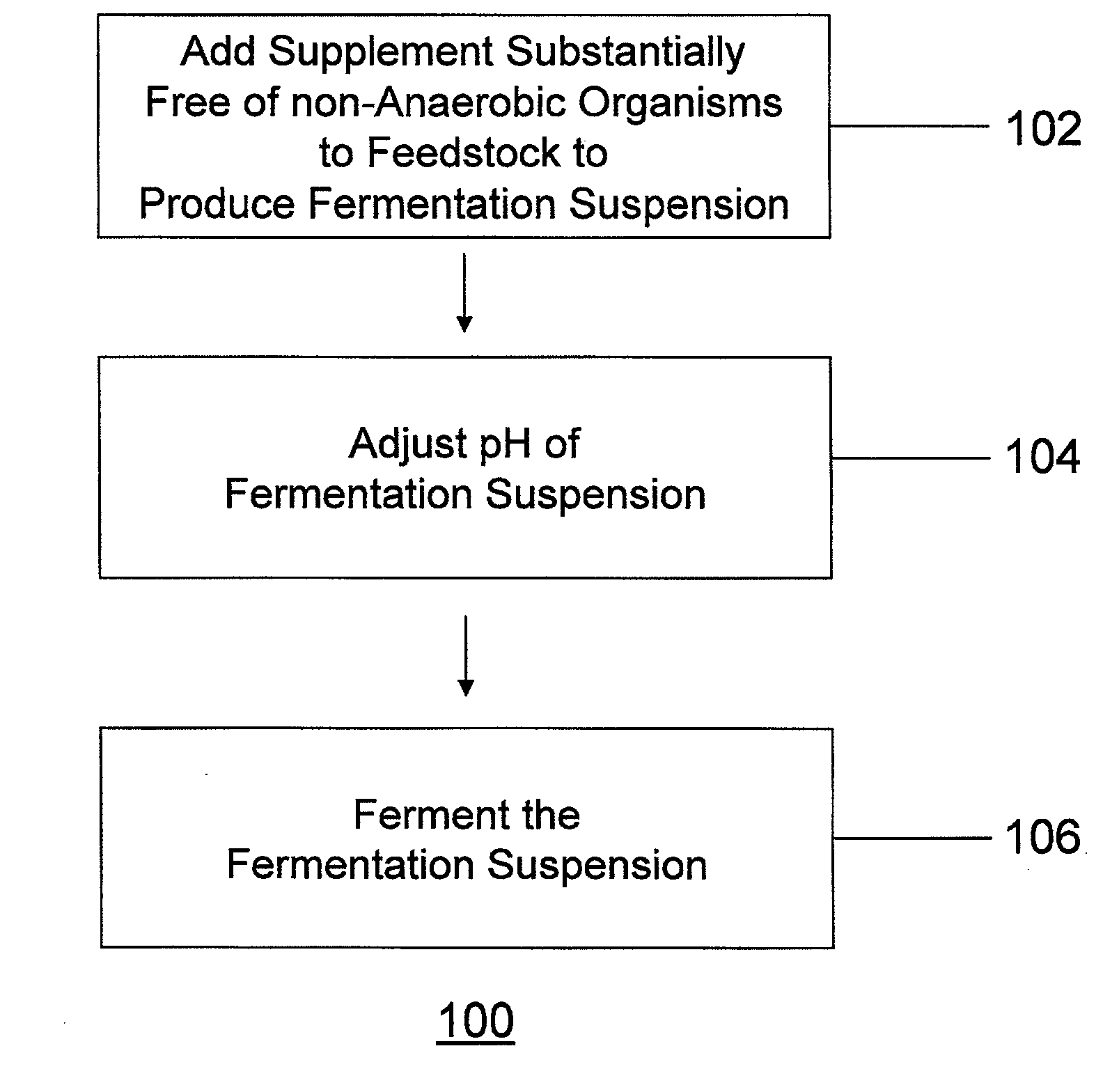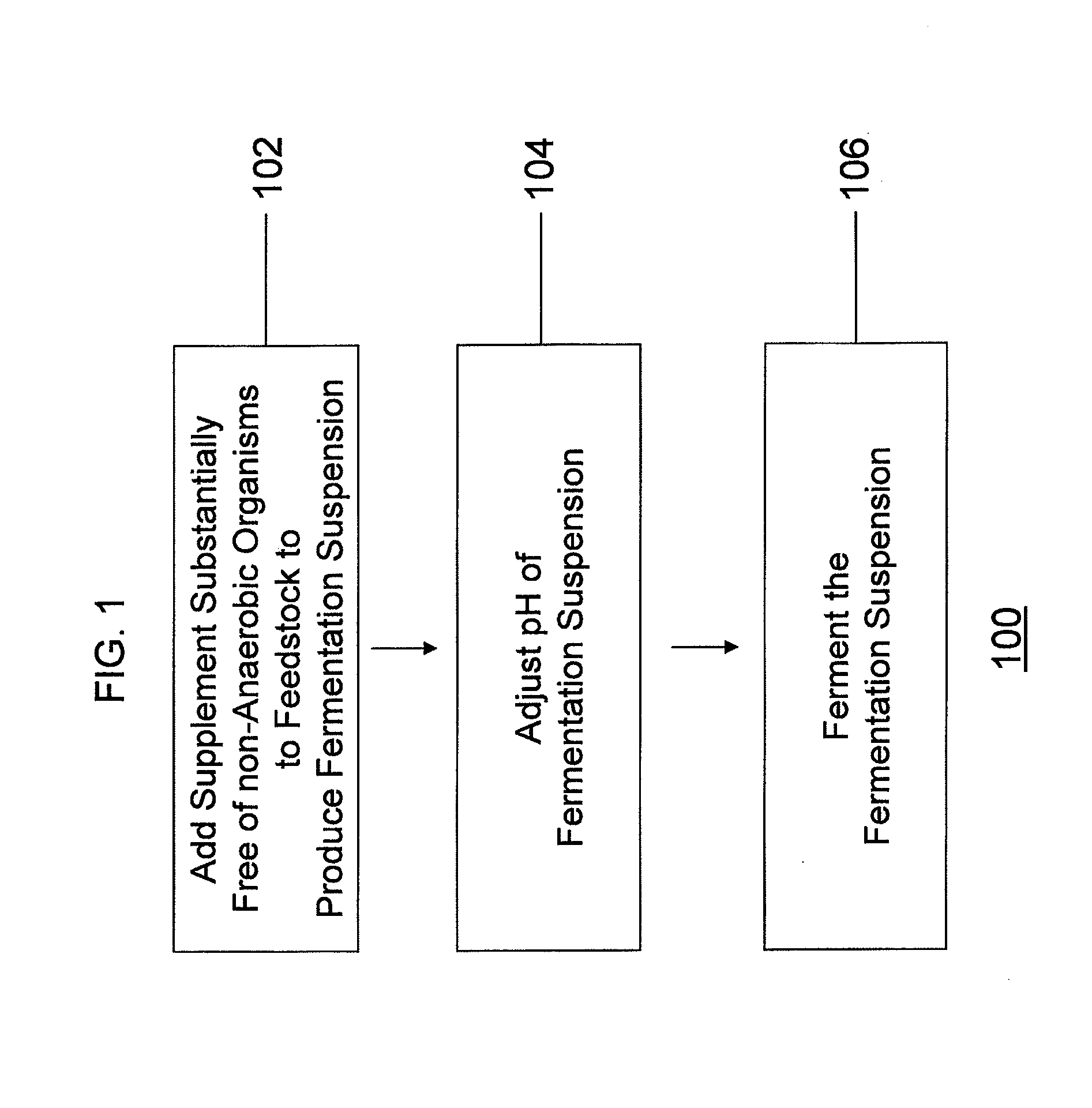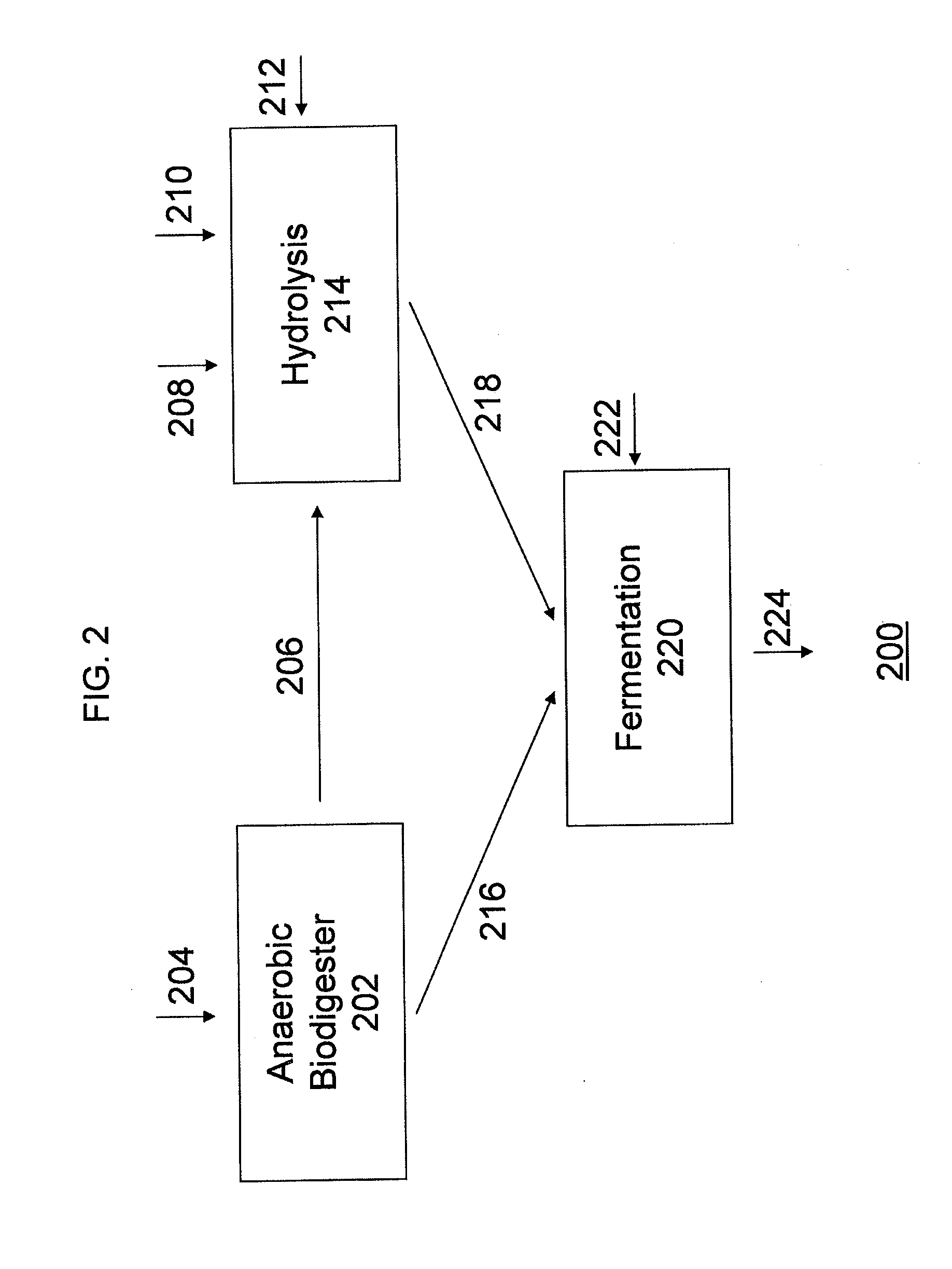Enhanced ethanol fermentation using biodigestate
a technology of biodigestate and ethanol, which is applied in the field of enhanced ethanol fermentation using biodigestate, can solve the problems of prohibitively increasing the cost of ethanol production, huge amount of fresh water consumed, and high material cost, so as to enhance ethanol production, enhance ethanol yield, and save valuable resources
- Summary
- Abstract
- Description
- Claims
- Application Information
AI Technical Summary
Benefits of technology
Problems solved by technology
Method used
Image
Examples
example 1
Anaerobic Digestate (AD) and Fractions Thereof Support Fermentation
[0100]The example shows that anaerobic biodigestates (AD) can replace fresh water for bioethanol production.
[0101]Four different separations of AD from IMUS™ demonstration plan in Vegreville (Alberta, Canada) were collected, including fresh anaerobic digestate (AD), FAN-separated digestate (FSD), and permeate (UFP) and concentrate (UFC) of FSD through ultra-filtration.
[0102]Specifically, FSD (FAN Separated Digestate) can be generated by using a screw press (such as a FAN brand screw press) or other similar mechanical devices to separate the digestate into two fractions—liquid fraction and solid faction. The liquid fraction is the FSD in this study. It contains about 5-7% total solids.
[0103]UFP / UFC can be generated by passing the FSD fraction through ultrafiltration. The permeate (UFP) is a relatively clean liquid (mostly water). The concentrated remains of whatever passed through the ultrafiltration system is designa...
example 2
Wheat Conversion in AD and Tape-water
[0116]This example demonstrates that AD does not inhibit alpha-amylases and glucoamylase during the conversion process from wheat to glucose. It also provides a comparison between the conversion rates of tape-water and AD when they were used as media.
[0117]Conversion from wheat or other crops to starch and then to glucose is the critical step for bioethanol production, since the amount of glucose will be directly related to the content of ethanol in the beer. Typically, an average conversion rate from wheat to glucose in bioethanol industry is around 56%.
[0118]Two most important enzymes during the conversion process are alpha-amylase and glucoamylase. The former catalyzes wheat to starch, the latter catalyzes starch to glucose. Two commercial converting enzymes, alpha-amylase (Spezyme XTRA) and glucoamylase (G-ZYME™ 480 ethanol) from Genencor® Inc., were used in two-step conversion experiments. D-glucose assay was adapted for evaluating the conve...
example 3
Ethanol Yields from Simultaneous Saccharification and Fermentation (SSF) Using AD and Tape-Water
[0125]Simultaneous saccharification and fermentation (SSF) studies were conducted to evaluate wheat-based bioethanol production in AD versus water. Since there were no negative impact of AD on glucose conversion from wheat and direct yeast-fermentation of sugar, ethanol yield in post-fermenting beer represents AD's effect on fermentation process.
[0126]The example provided direct comparison between final ethanol content of the beer from SSF using AD- and water-wheat mixtures. It also optimized the process of SSF in lab scale, and investigated which component in AD, nutrients, carbohydrate, proteases or microbes, contributed to ethanol production increase.
[0127]The SSF experiment was set up in 250 ml flasks containing 28 or 36 grams of dry wheat in 100 or 130 ml AD (FSD and UFP) and water, respectively. β3-glucanase / xylanase mixture (OPTIMASH™ BG from Genencor®, Rochester, N.Y.) was tested ...
PUM
| Property | Measurement | Unit |
|---|---|---|
| time | aaaaa | aaaaa |
| time | aaaaa | aaaaa |
| time | aaaaa | aaaaa |
Abstract
Description
Claims
Application Information
 Login to View More
Login to View More - R&D
- Intellectual Property
- Life Sciences
- Materials
- Tech Scout
- Unparalleled Data Quality
- Higher Quality Content
- 60% Fewer Hallucinations
Browse by: Latest US Patents, China's latest patents, Technical Efficacy Thesaurus, Application Domain, Technology Topic, Popular Technical Reports.
© 2025 PatSnap. All rights reserved.Legal|Privacy policy|Modern Slavery Act Transparency Statement|Sitemap|About US| Contact US: help@patsnap.com



